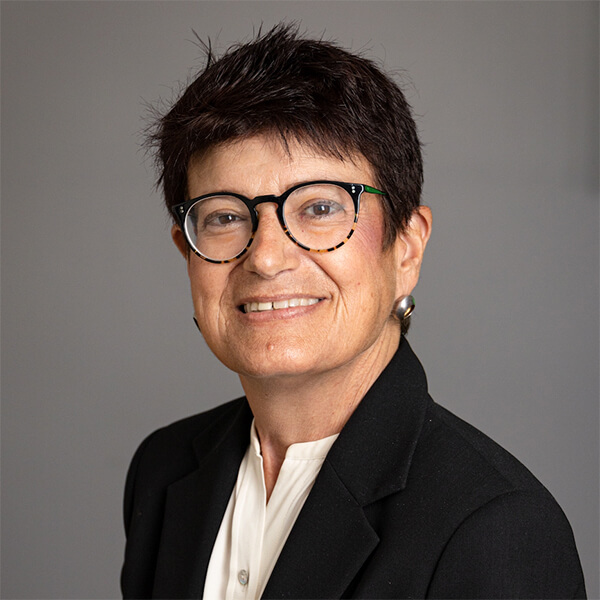Dean Carolyn Meltzer Q&A: “We’ve been on the AI bandwagon for a long time.”

What is your vision for how the Keck School of Medicine will collaborate with the recently named Alfred Mann Dept. of Biomedical Engineering? Can you provide one or two concrete examples?
We are very excited about this collaboration. I’ve always worked in close collaboration with engineering and particularly biomedical engineering, so I was very excited when Peter Wang was named as department chair. We have a program we are growing in cancer cell-based therapy, and cell signaling that is ripe for collaboration. We also include Peter and other engineering colleagues in our research strategic planning at Keck School of Medicine of USC. Whether we’re talking about stem cells, neuro-restoration, brain-machine interfaces or A.I. in medicine, there are a lot of areas of collaboration.
I envision further developing research teams that are made up of engineers, physician-scientists, and computational scientists. We’ve also talked about looking at our medical student programs, including our combined M.D./Ph.D. program, to encourage the convergence in students who seek to thrive at the interface of medicine and engineering.
USC recently launched the $1 billion Frontiers of Computing Initiative, putting AI/machine learning at the forefront of education. How do you see medical fields like radiology being impacted by AI in the future?
In radiology and imaging science, we’ve been on the AI bandwagon for a long time. In fact, many of us have done some previous machine learning work. Outside of radiology, there are so many other areas in the medical field that can be impacted by AI. There are a number of cases where we’ve tried, for example, to ask, “Can the computer decide from an X-ray of the hand in a child what’s the approximate age of the patient?” There have been algorithms applied to mammography, which is pretty complex tissue for the human eye to observe, but it could at least point out areas that may be most concerning for cancer. However, you still need a trained physician to work alongside AI tools. In my own field of neuroimaging, I’ll use the case of a critical finding. Let’s imagine someone comes into the emergency department with a terrible headache. Most of the time headaches are not life-threatening, but typically a CT scan is performed to look for a brain bleed or subarachnoid bleed that’s life-threatening and needs to be treated right away. These bleeds can manifest as a subtle finding of a small area of increased density near the brainstem, and sometimes that may be missed by the radiologist. So, there are algorithms that can draw your attention to an area that looks different relative to other normal studies we’ve seen. Is this a bleed? The trained eye can help make that determination, so I think AI will be increasingly used as a helpful tool for physicians. It’s only in more simple tasks that I think it could say yay or nay on a specific diagnosis.
What specific areas of medical research and education do you believe will benefit the most from the integration of AI? What will it mean for patients?
Those outside of medicine may not think about the many sources of inefficiency in healthcare systems. As medical professionals, we have to do a lot of checks and balances. If you walk into a clinic or a doctor’s appointment, you may have multiple people asking if you’ve had a fever in the last 21 days. Do you have symptoms of COVID? What medications are you on? What allergies do you have? If you go to another clinic, they ask you the same things. It would be helpful for AI to streamline those processes. Also, allowing the patient to bring in a sample of their medications and use AI to identify those pills and their dosage and automatically enter them into the patient’s electronic health record.
We dictate notes or transcribe notes as physicians while sitting in front of a computer trying to also look at the patient. How can we automate note-taking integration of clinical information in ways that speed up the process? AI could be used to identify how many patients are likely to not show up for a doctor’s appointment and why. It could also help answer questions about how we flex our staffing of clinical areas. AI could really get into the business analytics of how to run more efficient health care, and I think everybody would appreciate that since it would also lower costs. Then, of course, there’s the diagnostics, like integrating a pathology report with a radiology report.
Some have expressed concerns about the ethical implications of AI in healthcare. How do you address those concerns and ensure the responsible use of AI technology at Keck?
The ethics of AI is something I believe is very important. I built a group at Emory in the radiology department that was particularly focused on bias in AI, including how we might translate our own human bias into AI algorithms, and how we might or might not be creating brittle datasets that are not broadly useful. There are a lot of ethical and technical issues that we must be aware of to make sure that as we develop algorithms, they’re tested in different settings and that we review all of the information that goes into the algorithms.
What’s one thing you wish engineers understood better about doctors (or maybe healthcare in general)? And what’s one thing you wish your fellow doctors understood better about engineers?
I think there are times when physicians may think, “oh, we just need an engineer to fix something so we can do it better.” I believe physicians could better understand the complexity and the ability to bring design thinking into our spaces that engineers do so well. I also sometimes come across engineers who come up with a great solution to a perceived clinical problem that is, in reality, not impactful in our health delivery systems. When engineers and physicians collaborate to understand obstacles in the real world healthcare setting, so much is possible. This partnership is really important.
Many people may not be aware of your deep love for photography. How did this passion develop alongside your demanding career?
I was interested in photography long before I decided to pursue medicine. My father loved to play with cameras, and his enthusiasm inspired me from a very young age. He was also a geeky science person like me. So, we would fiddle with cameras, and we’d take pictures together. I was always a very visual-spatial person, which is probably why I was drawn into imaging science and photography. I also used to play competitive chess, too, so that ability to see spaces and really understand the spaces around us helped me as a neuroradiologist and as a photographer.





